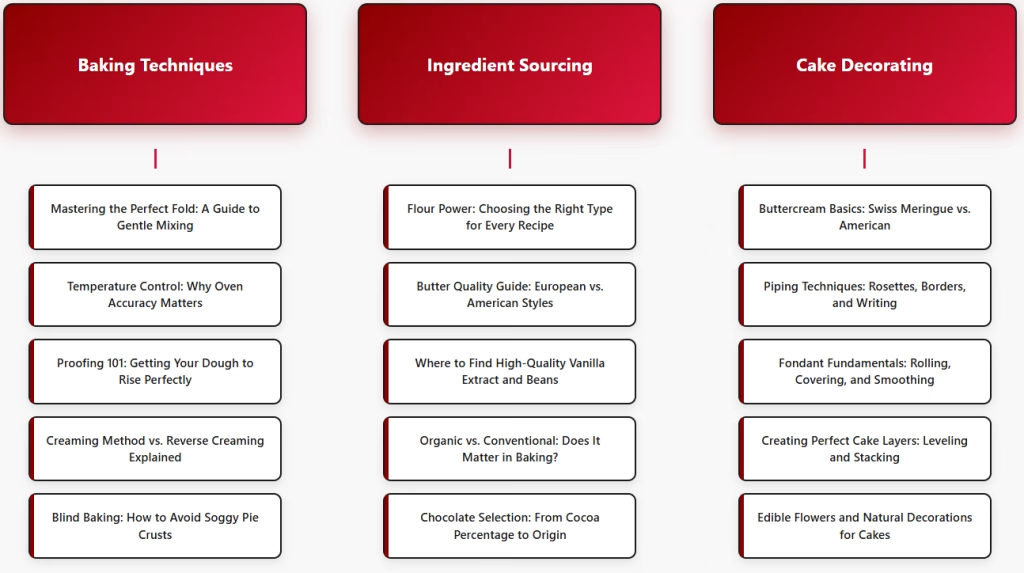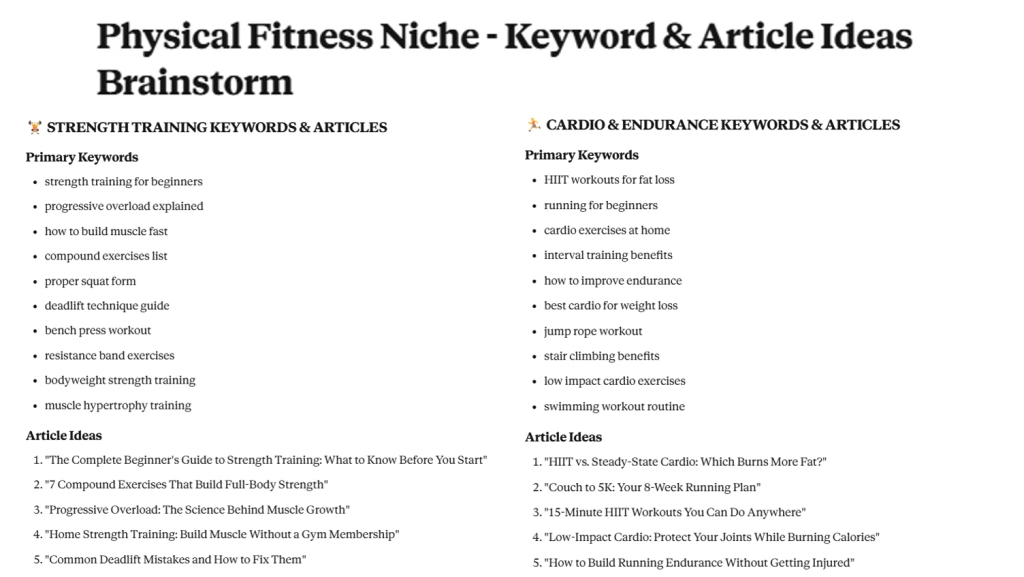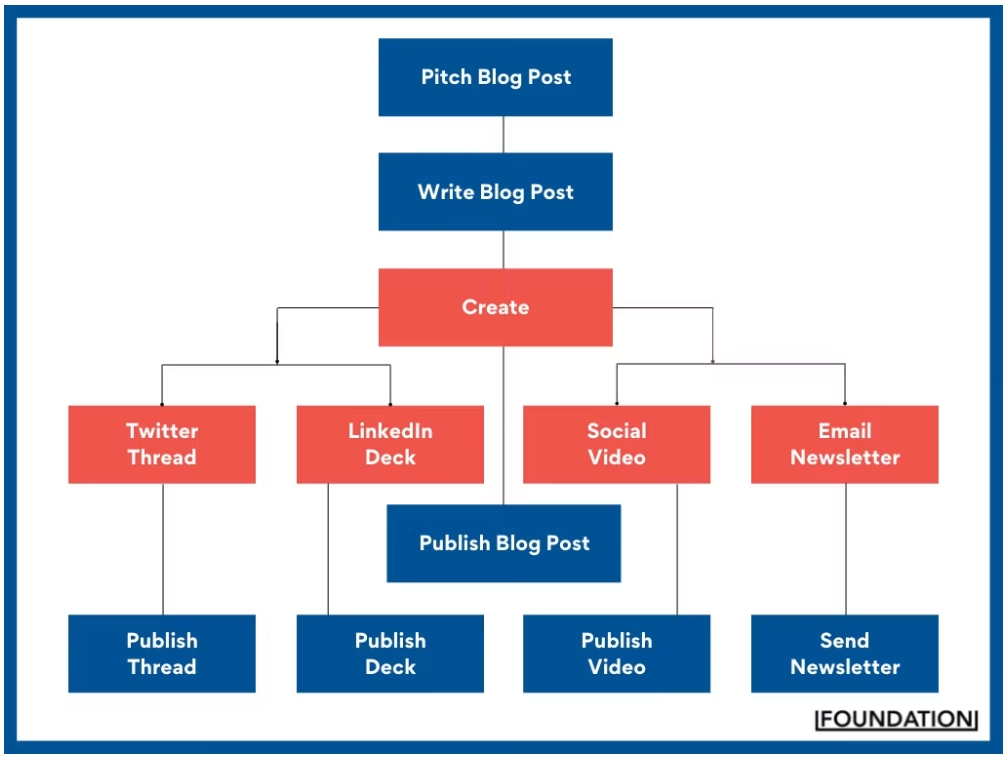Transform Your Marketing with a Strong Content Creation Plan
Written by David L Hicks – October 11th, 2025
Most of the time, when you’re developing content that doesn’t resonate with your audience, it’s not because the content isn’t good. The problem comes from a lack of a real content creation plan. Having a solid content creation plan makes all the difference, taking you from guessing to strategically growing your audience.
You can finally stop wasting your precious time. A clear plan serves as your guiding principle for everything you publish, transforming random acts of content into a cohesive marketing strategy. A cohesive marketing strategy means that every content piece you produce has a purpose and a place in your overall strategy, helping you create successful content consistently.
Table of Contents
ToggleWhat Is a Content Creation Plan?
Think of a content plan as the blueprint for your digital marketing efforts related to content development. Having a plan helps map out your overall content strategy. It is more than just a random list of blog post ideas you jotted down on a napkin. It’s a structured document that guides what you create, when you publish it, and where you share it to achieve specific marketing goals.
A well-crafted content planning document clearly outlines your objectives and the target audience you aim to reach. It maps out your topics, formats, and the channels you will use for distribution. This detailed approach, a core part of strategy content planning, makes your content efforts focused and much more effective, ensuring your media content is always on point.
Essentially, this plan becomes your single source of truth for all content-related activities. It saves you from that panicked feeling of not knowing what to post next and aligns your team members around a common objective. You’ll operate with clarity and confidence, rather than the constant stress that is a common issue for any content creator.
Step 1: Set Crystal Clear Content Goals
Before you write a single word, you have to know why you’re doing it. What do you want your content to achieve? Without specific goals, you’re just making noise online, not an impact that supports your business.
Your goals should be specific, measurable, actionable, relevant, and time-bound (SMART). Don’t just say you want “more traffic.” A much better goal is, “Increase organic traffic to our blog by 20% over the next three months by publishing two new, SEO-optimized blog posts per week.” This kind of specific, measurable, actionable, and relevant goal gives you a clear target.

(Source – Notejoy)
SMART goal clarity helps you focus your efforts and justify the resources you spend on creating content. Research from Dominican University of California shows that people who write down their goals are significantly more likely to achieve them.Defining what success looks like is the first step in developing effective content plans that genuinely work.
Common content goals include:
- Building brand awareness and becoming a recognized name in your industry.
- Driving traffic to your website to increase visibility and leads.
- Generate qualified leads for your sales team.
- Improving customer retention by providing valuable, supportive content.
- Boosting engagement on social media to build a loyal community.
Choose one or two primary goals to start. Trying to achieve everything at once will dilute your focus and concentration. Once you have your primary goals, you can create supporting objectives for each piece of content you produce.
Step 2: Know Your Audience Like a Friend
Who are you creating this content for? If your answer is “everyone,” you’re setting yourself up to connect with no one. The best and most effective content feels like it’s speaking directly to one person: your ideal customer.
To do this, you need to build a buyer persona for your target audience. This is a semi-fictional character who represents your ideal customer or reader. Give them a name, a job, and a list of struggles they face to get a clear idea of who they are.
What keeps them up at night, and what are their biggest questions? You can get these audience insights from customer data, social media comments, sales team feedback, and analytics tools. Knowing their pain points allows you to create content that resonates deeply and offers real solutions to their problems.
Ask yourself these questions to build your persona:
- What are their demographic details (age, location, job title)?
- What are their biggest professional or personal challenges?
- Where do they look for information online (blogs, social media, forums)?
- What kind of content format do they prefer (articles, YouTube videos, podcasts)?
- What is their primary motivation for seeking out information on your topics?

Step 3: Find Your Core Content Pillars
You can’t be an expert on everything, and trying to cover too much ground will weaken your authority. That’s why you need content pillars. These are the 3-5 main topics that your brand will be known for, forming the foundation of your content strategy.
For example, if you run a small bakery, your content pillars might be “Baking Techniques,” “Ingredient Sourcing,” and “Cake Decorating.” These big-picture topics act as buckets for all your smaller content ideas. They keep your content focused, consistent, and relevant to what your audience expects from you.

Content pillars help you build authority in your niche. When someone needs advice on those specific topics, they’ll think of you first because you consistently produce high-quality content about them. This also makes brainstorming much easier, because you always have a starting point and a clear direction for your content efforts.
To identify your pillars, consider the intersection of your business expertise and your audience’s needs. What are the most common search terms that lead people to your site? What broad subjects can you talk about that directly relate to the products or services you offer?
Step 4: The Fun Part – Brainstorming Ideas
Now that you have your pillars, it’s time to fill them with specific ideas for blog posts, videos, and social media content. This is where you can get really creative. But you don’t have to start from a blank page.

Keyword research is a fantastic place to begin. Use a tool like Google Keyword Planner or a third-party marketing solution to see what questions people are actively putting into a search engine. Answering those questions is a direct path to providing value and driving organic traffic.
Also, take a look at what your competitors are doing. What are their most popular articles, and what topics are resonating with their audience? Don’t copy them, but use their success as inspiration to create something even better and more thorough. Forums like Reddit and Quora are also goldmines for raw, unfiltered questions that your audience asks every day.
- Check “People Also Ask” boxes on Google for related questions.
- Use a tool like AnswerThePublic to find hundreds of queries around a keyword.
- Survey your current email list or social media followers for their biggest struggles.
- Listen to customer service calls or review support tickets to identify common issues.
Building a list of potential topics ensures you never run out of ideas for media content. You’ll have a backlog of content waiting to be created, which is managed in your content calendar. This preparation removes the pressure of on-the-spot creation and helps you save tons of time in the long run.
Build Your Winning Content Creation Plan
With goals, an audience profile, and a list of ideas, you’re ready to build your editorial calendar. This is where your strategy content becomes an actionable plan. A content calendar is a schedule that outlines what you’ll publish and when, making project management for content much simpler.

Your calendar doesn’t have to be complicated. It can be a simple document in Google Sheets, a Trello board, or part of a dedicated marketing platform. The important thing is that it works for you and keeps you organized, whether you’re a solo content creator like me or part of a larger team.
A helpful planning template or content planning template should include more than just the topic and date. Consider adding columns for the content format, target keyword, call-to-action, distribution channels, and the person responsible. This level of detail makes your social media calendar or media calendar a powerful organizational tool.
Here’s an expanded table to show what a weekly calendar template could look like:
| Day | Content Title | Format | Pillar | Channel | Status |
|---|---|---|---|---|---|
| Monday | 5 Steps to Bake a Perfect Sourdough | Blog Post | Baking Techniques | Website & Email | Published |
| Tuesday | Sourdough Quick Tip: Scoring | Video (Reel) | Baking Techniques | Scheduled | |
| Wednesday | Behind the Scenes at the Bakery | Photo Story | Brand Story | Draft | |
| Thursday | Why We Use Local Flour | Blog Post | Ingredient Sourcing | Website | Writing |
| Friday | Weekly Recipe Roundup & Tips | All Pillars | Newsletter | Outlined |
Having this calendar gives you a bird’s-eye view of your content strategy. You can see how all the pieces fit together to support your goals. It’s about being intentional with every single post and ensuring a steady flow of quality content.
Outline and Research
Every piece of content should start with a solid outline. This structures your thoughts and makes the writing process smoother, helping you produce high-quality content more efficiently. It’s like having a map before you start a road trip; you know where you’re going and how you’ll get there.
During the research phase, gather stats, quotes, and links to support your points. This adds credibility to your content, making it more trustworthy. It shows you’ve done your homework and are providing information that is both helpful and accurate.
Drafting and Writing
When you start writing, don’t aim for perfection on the first pass. Just get your ideas down on the page. The goal of the first draft is to get the story and the main points out of your head without being slowed down by self-editing.
Write in a conversational brand voice, as if you’re talking to a friend. Use short sentences and simple language. This makes your content easy to read and digest for a wider audience, improving the user experience on your site.
Editing and Visuals
Once the draft’s done, let it sit for a day before you edit. Waiting a day and sitting on a draft is something I still struggle with as a content creator. I want to jump from writing to editing after finishing my work, or I edit while I am writing my first draft.
I know it can be difficult, but you have to fight the urge to do that. Editing after some time away from the document helps you look at it with fresh eyes. Check for typos, grammatical errors, and awkward phrasing to ensure you create high-quality, professional work.
Next, add visuals to break up the text. Use high-quality images, screenshots, or charts to enhance your content. Visuals make your content more engaging and help explain complex ideas, which can enhance customer understanding and increase time spent on the page.
Scheduling and Publishing
Finally, it’s time to publish your content. Utilize a scheduling tool to automate your blog and social media posts. This lets you stay consistent without being tied to your computer all day, a key tactic for any busy digital marketing professional.
Step 5: Don’t Forget About Distribution
Hitting “publish” is not the last step; it is just the beginning. Creating amazing content means nothing if no one sees it, which is why distribution is so critical for successful content planning. A good rule of thumb is to spend as much time promoting your content as you did creating it.

(Source – Instapage)
As displayed in the graph, the three primary distribution channels are as follows:
- Owned Media Channels – The owned media channels are platforms that you control. Examples include your website, blog, and email newsletter.
- Earned Media Channels – The earned media channels consist of content shared and discussed by others, including social shares, media mentions, and industry publications.
- Paid Media Channels – The paid media channels are platforms where you pay to distribute content. Paid media channels include social media advertising (LinkedIn, Bluesky Social, and X (Twitter)), sponsored posts, and content discovery platforms.
Start by sharing it with your email list, as email marketing is a powerful way to reach an engaged audience. Post it multiple times on different social media platforms, changing the caption each time to keep it fresh. Proper distribution is what helps drive organic growth and visibility.
Consider repurposing your content for other channels to extend its reach. Wix SEO Hub explains how a single blog post can be transformed into a video script, an infographic, or a series of social media graphics. Repurposing content extends the life of your work and helps you reach new audiences who prefer different formats.

(Source – Wix SEO Hub)
Step 6: Measure What Matters
Your content creation plan is a living document, not a one-and-done project. To make sure it’s working, you need to track progress and performance. Data gives you the insights to improve over time and refine your marketing strategy.
Regularly review your key performance indicators (KPIs). If your goal is to increase brand awareness, track metrics such as social shares and brand mentions. To drive organic traffic, review your website’s analytics for page views, keyword rankings, and unique visitors from search engines.
Tools like Google Analytics are free and incredibly powerful for measuring the performance of content. They can help you id
entify which content is resonating with your audience and which isn’t. Use this data to refine your approach, focusing on what works and adjusting your strategy for what doesn’t, allowing you to consistently produce content your audience loves.
Conclusion
That feeling of content chaos doesn’t have to be your reality. With a thoughtful approach, you can develop a system that delivers tangible results for your business or brand. A great content creation plan will help you stop scrambling for ideas and start publishing with confidence and purpose.
This process transforms content creation from a chore into a powerful growth engine. Your content plan is your guide to building a meaningful connection with your audience and achieving your business objectives. So take the first step today and start mapping out your success.